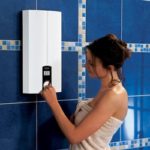Independent connection of instantaneous water heater
Water heaters are a convenient and simple design that allows you to get the required amount of hot water in places where there is no central water supply. They are actively used in country and cottage construction, as well as in small enterprises and everywhere where there is such a need. Installing a flow water heater is a fairly simple process that can be performed both by specialists and independently. With knowledge of how to connect instantaneous water heater, you can install it yourself. However, it is best to seek the assistance of qualified personnel, in all cases where this is possible. This way you can avoid a lot of errors that can occur during self-installation, and the installation work will be given a guarantee.
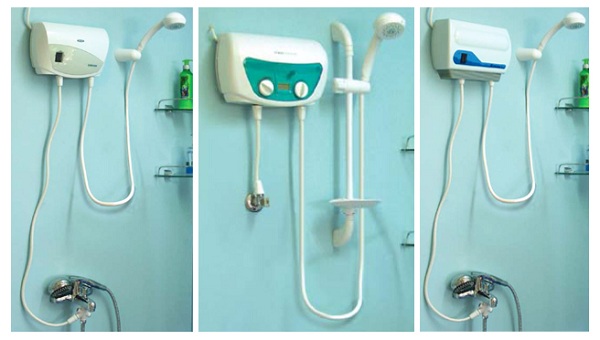
Electric instantaneous water heater
Select the type of heater
Water heaters on the market today are divided into three basic groups, each of which has its own distinctive features:
- Electric instantaneous water heater. The principle of operation of this heater is that there are no containers for heating water, and the heating itself begins to be produced at the time of consumption. Connecting the instantaneous water heater to the water supply is a fairly easy process in the case when all the preparatory work has already been carried out.
- Boiler type heaters. A distinctive feature of this type is the presence of a large tank (boiler) in which water is preheated. Installing such devices, it is worth remembering that the weight of the structure will be large enough, and it is not recommended to install it on the plasterboard walls, and if such a need arises - at the stage of building the wall, you will need to install embedded bars. There is no other way to fix the water heater tank on such a wall.
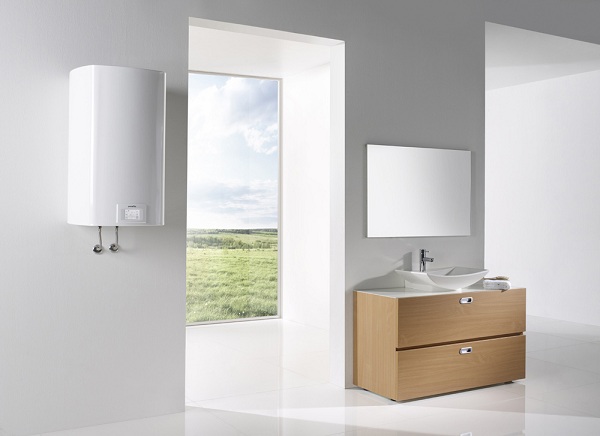
- Indirect water heater It is a hybrid of the first two types of devices, and in terms of its parameters it is also something average between them, according to its characteristics it is most suitable for conditions of use at medium loads with low speed.
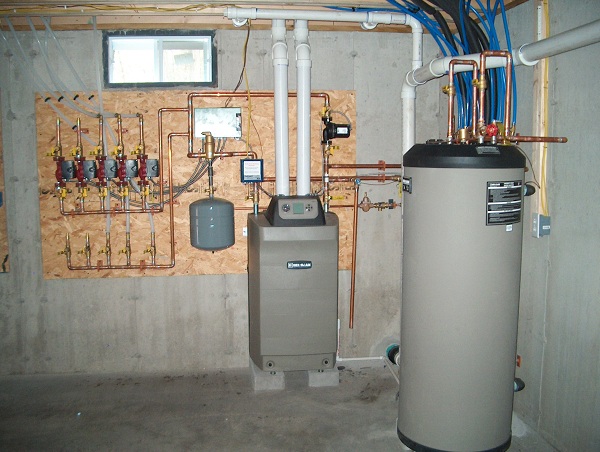
Before you start installing the instantaneous water heater with your own hands, you need to make sure that all conditions are prepared for operation.
Tool preparation and premises
We propose to consider the installation of such systems on the example of a flow-through water heater. To work on connecting the device to the water supply system, the following tools and materials will be required.
- To install the system on the wall, you will need a drill, as well as dowels and hardware. Flowing systems do not weigh very much, so it is not necessary to strongly strengthen the carrier part.
- To connect to the power grid is best to use separate line. Keep in mind that the power of such devices is quite high, so it is best to take the cross section of the wire, calculated from the power table. The conductor material must be copper, and since the electric current in it is found with the water flow, it is imperative that you put a separate automat on it, which, among other things, works on the difference of the differentials, that is, WPPH.
- Use flexible hoses or plastic pipes to connect to the water system. For a beginner hoses will be easier in terms of installation. The use of metal pipes involves a separate set of tools, and must be carried out by specialists.
Among other things, do not forget about the sealing compound and special plumbing tape.
It is also important to remember that electricity generation requires specialized knowledge and skills. Your safety depends on how correctly this part of the work is carried out, so it needs to be given special attention, and if you are not sure that you can do it, it is better to contact a specialist.
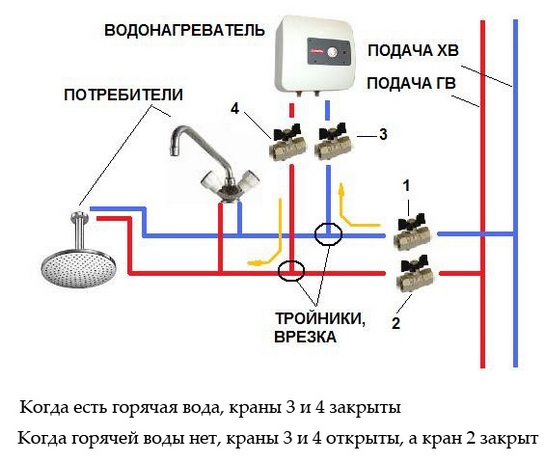
Assembly process
Now let's talk in detail about how to install a flow-through water heater. It is necessary to begin works with preparation of all surfaces and tools. Naturally, all connections must be made in advance and by the time of installation must be disconnected from the power and water supply.
- First determine the place where the heater will be installed. Using a level and a marker, put marks on the wall, on which you will drill later dowel holes. If you need to drill a hole in the tile, use a special drill bit, in addition, it is recommended to stick masking tape on the tile, this will reduce the number of chips on the surface.
- After the holes are drilled and the dowels are installed in them - proceed to mounting the device on the wall with self-tapping screws. Ensure that there is no distortion and that all parts are carried. uniform load.
- Now it is time to bring water to the heater. First of all, it is necessary to install a faucet in the pipe, before draining to the heater. After it install Tee teeThus, you will have a branch with cold water for further installation of water supply systems. On the tap to the water heater also install a tap.
- At the outlet, install a tee, if you intend to multiple consumers, or just a pipe, if we are talking about a single consumer of hot water. Do not forget to install taps at the exit of the device and in front of each consumer.
About the installation of electrical networks has already been said above. It is best to invite a specialist for this purpose and not to conduct them yourself. Correctly calculate and install electrical networks is an engineering problem that should be solved by a technically competent specialist.
In order to connect your heater yourself, you need to understand the issue well. All phases of work should be carefully planned, and the networks should be designed according to the expected load. Otherwise, you can get a very short-lived and dangerous result. The best solution would be to use the services of specialists in connection, resorting to self-assembly only in extreme cases.

/rating_off.png)






